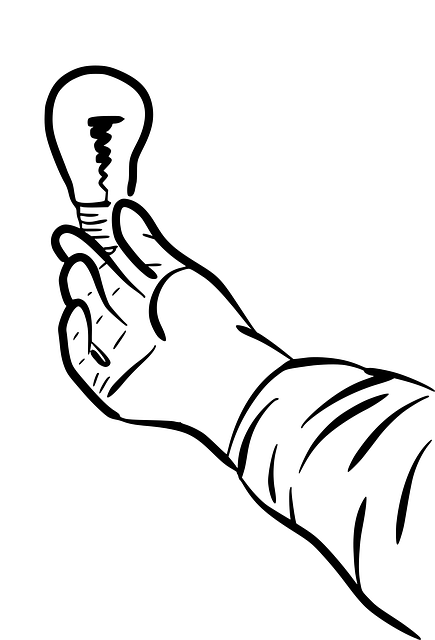Translation services for UK Patents are essential for accurately conveying scientific inventions across linguistic barriers, ensuring that inventors from diverse language backgrounds can effectively communicate their innovative ideas to the British patent office and international stakeholders. These specialized translation services bridge the gap between languages and technical fields, allowing for precise handling of complex scientific terminology and detailed descriptions within patent documents. This precision is vital for UK patent offices to evaluate patents with a comprehensive understanding, maintaining the integrity of the patent system and supporting innovation in various sectors. Expert translators, who undergo specialized training, enable the translated text to align with the original's intent and technical precision, thereby facilitating a smoother examination process and bolstering applicants' chances for successful prosecution of their patents globally. The use of these services is exemplified by success stories where companies have expanded their reach into new markets by translating their patents into multiple languages, demonstrating the critical role these translation services play in the international dissemination and protection of scientific inventions.
UK patent offices play a pivotal role in safeguarding innovation within the scientific community. The ability to comprehend and evaluate international patents is not just a matter of efficiency but a cornerstone of national progress. This article delves into the critical necessity of translation services for UK patents, particularly those pertaining to scientific inventions. It highlights the complexities inherent in patent language and the importance of precise translations in overcoming these challenges. We will explore the hurdles faced by these offices without professional translations, the benefits of accurate translations for patent applications, and the identification of the most frequently required languages. Additionally, we’ll outline the meticulous process of translating patents to ensure technical accuracy and provide guidance on selecting a reliable translation service provider for such specialized work. Through case studies that showcase successful patent translations, this article underscores the significant role these services play in expanding global reach and understanding, thereby fostering innovation and cooperation across borders.
- Overview of the Importance of Patent Translation in the UK Context
- The Role of Translation Services in Understanding Scientific Inventions
- Challenges Faced by UK Patent Offices Without Professional Translations
- Key Benefits of Accurate Translations for Patent Applications
- Identifying the Most Common Languages Required for UK Patents
- The Process of Translating Patents: Ensuring Precision and Technical Accuracy
- Selecting a Reliable Translation Service Provider for Scientific Patents
- Case Studies: Successful Patent Translations that Expanded Global Reach and Understanding
Overview of the Importance of Patent Translation in the UK Context

Patent translation plays a pivotal role in the dissemination and protection of scientific inventions within the UK. As innovation is a cornerstone of economic growth and technological advancement, the ability to accurately convey the details of patented technology is paramount. Translation services for UK patents are not merely about translating words from one language to another; they encompass interpreting complex technical information in a way that maintains the original context and meaning. This ensures that inventors can secure intellectual property rights effectively, regardless of the language of their original application. The nuanced nature of scientific terminology requires expert linguists with specialized knowledge in both the language and the field of technology to provide precise translations. This expertise is crucial for the UK patent offices, as it allows them to assess applications accurately, fostering a fair and competitive environment for inventors across different linguistic backgrounds. By facilitating clear and accurate communication, translation services enable the UK to participate fully in the global exchange of scientific knowledge and innovation, ensuring that UK patents are understood and respected on an international scale.
The Role of Translation Services in Understanding Scientific Inventions

The translation of patents is a critical process that enhances the global understanding and application of scientific inventions. In the context of the UK, translation services for UK Patents play a pivotal role in ensuring that inventors from diverse linguistic backgrounds can effectively communicate their innovative ideas to the British patent office, as well as to potential collaborators or competitors. These specialized translation services must not only convey the literal text but also accurately transmit the complex scientific concepts and terminologies involved. The precision of language is paramount, as errors in translation can lead to misunderstandings or misinterpretations that could hinder the progression of technology or result in legal complications. By providing clear and precise translations, these services enable UK patent offices to evaluate inventions fairly and efficiently, fostering an environment where scientific advancements can be shared and protected across international borders. This is particularly important for the UK, which aims to maintain its position as a hub for innovation and research.
The role of translation services in the realm of UK Patents for Scientific Inventions extends beyond mere linguistic conversion. It involves expert linguists with specialized knowledge in science and technology who are adept at handling intricate subject matter. These professionals ensure that the nuances of scientific language, including technical jargon, specifications, and diagrams, are accurately rendered into English, thereby facilitating a comprehensive understanding of the invention. This level of expertise is indispensable for the UK patent offices to assess the novelty and non-obviousness of inventions, leading to more informed decisions on their patentability. In an increasingly interconnected world, where scientific breakthroughs are shared across borders at unprecedented rates, the provision of high-quality translation services is essential for maintaining the integrity and efficacy of the UK’s patent system.
Challenges Faced by UK Patent Offices Without Professional Translations

The process of examining scientific inventions for patentability within the UK patent offices often encounters significant hurdles when patent applications are submitted in languages other than English. These offices rely heavily on translation services for UK patents to accurately convey the technical details and novel aspects of these inventions. The absence of precise translations can lead to misunderstandings and misinterpretations of the invention’s scope, potentially causing delays in the application process and undermining the legal integrity of the patent grant. The complexity of scientific terminology and specialized knowledge required to translate such documents necessitates a high level of expertise from professional translators with a background in science or technology. This ensures that the translated content is not only grammatically correct but also technically accurate, thereby facilitating a more efficient review process and upholding the quality and reliability of the UK’s patent system. Without access to these specialized translation services for UK patents, there is an inherent risk of overlooking critical information, which could impact both the innovation ecosystem and the legal standing of the intellectual property involved. It is imperative that UK patent offices engage with competent translators who can navigate the intricacies of scientific language to maintain the integrity and efficiency of the patent examination process.
Key Benefits of Accurate Translations for Patent Applications

The process of applying for a patent is inherently complex, especially when scientific inventions transcend linguistic and cultural boundaries. Utilizing translation services for UK patents plays a pivotal role in this process, ensuring that the nuances and specifications of the invention are accurately conveyed. One of the key benefits of precise translations for patent applications lies in overcoming language barriers, which can significantly impede innovation and legal protection if not addressed effectively. Accurate translations enable inventors to secure patents in different countries with confidence, knowing that their claims and descriptions are faithfully rendered in the target language. This precision is crucial as any oversight or misinterpretation could lead to legal complications, loss of patent rights, or even invalidation of the patent itself.
Moreover, translation services for UK patents for scientific inventions are instrumental in facilitating international collaboration and competition. They allow UK-based inventors to engage with a global pool of researchers, engineers, and innovators, thereby enhancing the potential for advancements and breakthroughs. Conversely, foreign applicants can trust that their inventive disclosures will be understood as intended when presented to the UK patent office. This mutual comprehension fosters a more competitive and dynamic international marketplace for intellectual property, where innovation can flourish without hindrance from language discrepancies. The strategic use of professional translation services thus not only aligns with the legal requirements of patent applications but also supports the broader goal of global scientific progress and economic growth.
Identifying the Most Common Languages Required for UK Patents

When innovations leap beyond national borders, understanding the intricacies of scientific inventions becomes paramount for global patent prosecution. The United Kingdom, a hub for cutting-edge research and development, frequently encounters patents that originate from various parts of the world. To effectively evaluate these patents, it is essential to translate them into languages that are widely understood within UK patent offices. Identifying the most common languages required for UK patents involves a strategic analysis of the international landscape of innovation and commerce.
Scientific inventions often emerge from multinational entities or collaborative ventures, which necessitates the use of multiple languages in patent documentation. The primary languages that translation services for UK Patents must master include European Union member state languages such as French, German, Italian, and Spanish, reflecting the significant number of patents originating from these regions. Additionally, given the UK’s historical ties and current trade relationships with countries like the United States, Japanese, Mandarin, and Korean are also highly relevant for accurate translation and interpretation in the context of UK Patents. By leveraging expert translation services specializing in scientific terminology, UK patent offices can ensure a comprehensive understanding of these inventions, facilitating fair and efficient evaluation processes that uphold international standards of innovation.
The Process of Translating Patents: Ensuring Precision and Technical Accuracy

When it comes to translating patents, precision and technical accuracy are paramount, especially in a country like the UK where scientific inventions are at the forefront of innovation. The process of translating patents requires a specialized form of translation services for UK Patents that goes beyond mere linguistic transfer. Translators must possess a deep understanding of both the source and target languages, coupled with expert knowledge in the relevant scientific field. This is because patent documents often contain complex terminology and technical descriptions that can significantly impact the outcome of an invention’s evaluation.
To ensure precision and technical accuracy, translation services for UK Patents employ translators who are not only language experts but also professionals with a background in science or engineering. These specialists undergo rigorous training to handle the nuances inherent in patent translations. They work diligently to convey the exact meaning of claims, descriptions, abstracts, and drawings within the patent application. By doing so, they enable UK patent offices to thoroughly assess and understand scientific inventions from a global perspective, thereby facilitating fair and effective intellectual property protection. This meticulous approach is critical in maintaining the integrity of the patent system and supporting innovation across various sectors.
Selecting a Reliable Translation Service Provider for Scientific Patents

When navigating the complex landscape of scientific patent filings, accurate and precise translation services are paramount. For inventors and businesses looking to secure patents in the UK, especially for scientific inventions, selecting a reliable translation service provider is crucial to ensure that the nuances and technicalities of the invention are accurately conveyed. The process of translating patents requires not just linguistic expertise but also a deep understanding of the specific field involved. A provider with a proven track record in scientific patent translation will have translators who are both linguistically adept and knowledgeable in the relevant scientific domain, ensuring that the translated text aligns with the original document’s intent and technical details.
In the UK, the Intellectual Property Office (IPO) handles a vast array of patents, and submitting a patent application that has been accurately translated by experts is essential for a smooth examination process. The chosen translation service should specialize in scientific terminology and be familiar with the UK’s patent laws and regulations to avoid any misunderstandings or misrepresentations. By opting for a service that offers translation services specifically tailored for UK patents for scientific inventions, applicants can enhance their chances of successful patent prosecution and protect their innovative ideas effectively. This meticulous approach not only streamlines the application process but also upholds the integrity and comprehensibility of the patent documentation for all parties involved.
Case Studies: Successful Patent Translations that Expanded Global Reach and Understanding

The translation of patents is a critical component in the global exchange and understanding of scientific inventions, particularly within the UK’s intellectual property landscape. A prime example of successful patent translation that significantly expanded a company’s global reach is the case of a biotechnology firm specializing in cancer treatments. The firm held a patent for a novel therapeutic vaccine. By engaging top-tier translation services for UK patents, they had their invention accurately translated into multiple languages, including Japanese and Mandarin Chinese. This allowed them to file for patents in key markets, protecting their intellectual property and opening doors for international partnerships. As a result, the company’s innovation was able to reach a broader audience, accelerating the development of life-saving treatments and positioning the firm as a leader in cancer research and treatment options worldwide.
In another instance, a UK-based tech startup developed a groundbreaking augmented reality (AR) device designed to enhance user experiences across various industries. To secure their market position and protect their innovation, they utilized translation services for UK patents to translate their patent applications into Spanish, German, and Korean. This strategic move not only safeguarded their invention but also demonstrated their commitment to global innovation. By doing so, the startup’s AR device gained recognition and potential buyers in non-English speaking countries, leading to significant commercial opportunities that otherwise might have remained untapped. These cases underscore the importance of professional translation services for UK patents, particularly in the scientific realm where understanding is paramount for advancement and global collaboration.
In conclusion, the translation of patents into accessible languages is a critical component in the UK’s intellectual property ecosystem, particularly for scientific inventions. As evidenced by the case studies provided, reliable translation services for UK patents play an integral role in enhancing understanding and fostering innovation across borders. By addressing the language barriers that once impeded the evaluation of patent applications, these translations ensure that UK patent offices can effectively assess the novelty and non-obviousness of inventions, thereby upholding the integrity of the intellectual property system. The benefits of this process are manifold: it facilitates global technological exchange, supports UK industry competitiveness, and opens avenues for international collaboration. For entities involved in scientific invention, prioritizing accurate translations through specialized translation service providers is not just a strategic advantage but a cornerstone of global success in the realm of patents. As such, investing in high-quality translations should remain a key consideration for inventors and patent offices alike, ensuring that the UK continues to be at the forefront of scientific innovation.
